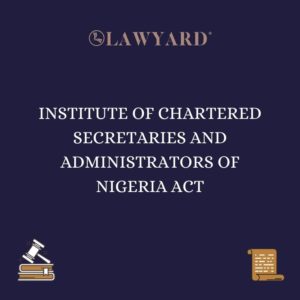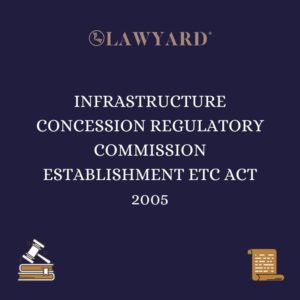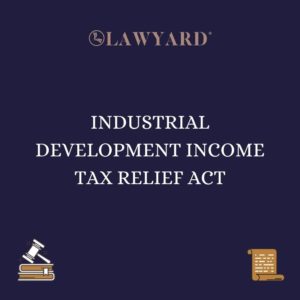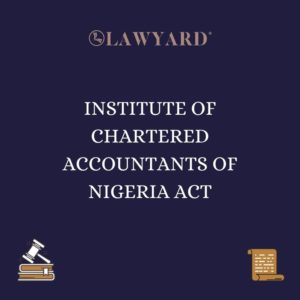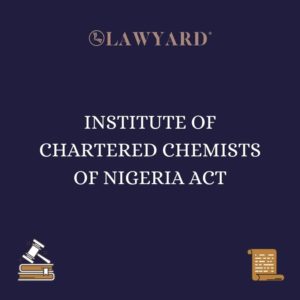Namibia’s 2022 Mega Oil Discoveries and an Assessment of its Regulatory Readiness by Tosin Grey

Lawyard is a legal media and services platform that provides…
The year 2022 was undoubtedly a revolutionary moment for the Namibian oil and gas sector. While Namibia’s exploration for oil over the past few decades has borne little fruit, the mega discoveries made early in 2022 were record-breaking. From the discovery of light oil in offshore Graff-1 deepwater under Petroleum Exploration License 39 (PEL 39) owned by Shell Namibia Upstream BV (Shell), Qatar Energy, and National Petroleum Corporation of Namibia (NAMCOR) to the TotalEnergies’ significant oil and gas discovery on the Venus prospect, located in block 2913B, PEL 56 in the Orange Basin, Namibia is well on its way to becoming a major producer and exporter on the continent, and the world has taken notice.
With an estimated total volume of the new finds at 835million barrels and a projected capacity for more, due to Venus’ prospects, the two-sister discoveries have repositioned Namibia as a hotbed for exploration and investment in the energy sector, triggering developing interest in the country’s upstream market. Bloomberg also reports that the jackpot discovery may help Namibia double its GDP by 2040.[1] Predictably, the announcements of the discoveries have stirred new interest in the country by energy majors worldwide. Reports indicate that Shell has already drilled a follow-up well about 8km from Graff and is in the process of evaluating its find, with further drilling in PEL 39 anticipated towards the end of the year; TotalEnergies is expected to spud a delineation well at Venus and additional wells in the fourth quarter of 2022; Chevron is reportedly set to enter Block 2813B; Eco Atlantic has expanded its presence offshore Namibia; while Galp Energies is expected to drill a probe in the coming months. As such, between this year and 2025, over 15 probes are expected to be drilled offshore Namibia, according to Rystad Energy[2], making the country an exploration hotspot.
Against this background and to optimally utilize its newfound exploration hotspot status, it is critical that Namibia re-evaluates its regulatory and fiscal readiness for all the opportunities that will no doubt begin to line up in the coming years following these jackpot discoveries.
Petroleum Regulation and Fiscal Regime in Namibia
Namibia’s petroleum regulation regime is laid out in four significant pieces of legislation: the Petroleum (Exploration and Production) Act 1991 and the Petroleum (Taxation) Act, both of which are principally amended by the Petroleum Laws Amendment Act 1998 (Petroleum Act/The Act), and the Model Petroleum Agreement 1998. The Minister of Mines and Energy administers the Petroleum Act and is empowered to appoint a Commissioner of Petroleum Affairs (‘Commissioner’) and a Chief Inspector of Petroleum Affairs (‘Chief Inspector’). The officers perform duties imposed on them under the Act or as the Minister may direct.[3]
Under the Petroleum Act, there are three (3) major types of licenses that may be issued to a prospective licensee upon application:
(a) Reconnaissance license is granted to conduct a preliminary exploration of a considerable expanse of land or seabed acreage to determine where prospecting should be focused once an exploration license is obtained. It is usually granted for a period of two years and renewable for another two years[4];
(b) Exploration license, which authorizes the holder of such a license to carry on exclusively, exploration operations in the block or blocks to which it relates subject to such terms and conditions and in such block or blocks as may be specified in such license. It is usually granted for an initial period of 4 years with two renewal periods of 2 years each. The Minister may, however, extend the initial exploration and renewal periods by 12 months where good cause is shown to him[5]; and
(c) Production license granted to a licensee to carry on production operations on the block and sell same. A production license is granted for a period of 25 years and may be renewed only once for a period of 10 years.[6]
Furthermore, the Petroleum Act requires that there must be a Petroleum Agreement between an applicant for a petroleum license and the state before a grant of an exploration or production license.[7] The form of such an agreement is prescribed by the Act, i.e., the Model Petroleum Agreement 1998, a concession-type agreement that the government published to serve as a basis for negotiation with applicants for exploration licenses. The Model Agreement largely mirrors provisions of the Petroleum Act and Petroleum Taxation Act. Clause 13 of the Model Agreement mirrors Sections 62 and 67 of the Petroleum Act, which provide that royalty of 5% shall be paid into the State Revenue Fund. In addition, an annual charge equal to the figure expressed in Namibian Dollars is calculated by multiplying the number of square kilometers included in the Block(s) to which the Licence relates, by the stipulated rate. In the case of exploration, the applicable rates are NAD 60, NAD 90, NAD 120, and NAD 150 for the initial exploration period, first renewal, second renewal, and third renewal periods, respectively. In the case of a production license, the applicable rate is NAD 1500.
Taxation Regime
Taxation in Namibia is regulated by the Petroleum (Taxation) Act 3 of 1991 (PTA), the Income Tax Act 24 of 1981, and the Petroleum (Exploration and Production) Act 1991 which provides for the levying of royalties. Petroleum tax is levied annually for the benefit of the State Revenue Fund at a rate of 35%[8], with an additional profit tax charged on after-tax net cash flows from petroleum operations, depending on the rate of return.[9] The after-tax net cash flow is determined by deducting the exploration and development expenditure and the petroleum income tax from gross income. Income tax is levied in respect of each license area. License areas are taxed separately even if the taxpayer has been granted the right to explore different license areas. Withholding tax is not levied on dividends from petroleum operations. However, it is imposed on royalties, management services, and consulting/technical services at 9.9%, 25%, and 25%, respectively. The Act also provides for taxable incomes for taxation under the Act.[10]
Regulatory insufficiency
The petroleum regulation in Namibia can be likened to a brand-new car equipped with an outdated engine. The country’s petroleum industry in 2022 is still regulated by laws enacted thirty-one (31) years ago, with one amendment done twenty-four (24) years ago. Naturally, the regulations are, at best inadequate in light of new developments in today’s oil and gas ecosystem.
More and more, African oil-producing countries are looking to transition from being onlookers in the operation of the oil and gas industry, occupying the lowest management cadre with little or no ownership of the interest in oil and gas assets to taking a more prominent role in the sector and Namibia needs to do the same if it is to leverage its new finds for the development of the country. In Nigeria, a Local Content Act was enacted in 2010 to introduce an enforceable legal regime for the promotion of local content practice in the industry, thereby reversing over 50 years of total foreign dependency, which had resulted in an enormous capital flight of about $380 billion, nearly 2 million job losses and less than 5% in-country value addition. With almost 42% local content in Nigeria’s oil and gas industry today, up 740% from what existed before the Local Content Act came into force, the Federal Government of Nigeria currently projects that by 2027, local content in the Nigerian oil and gas industry would increase to at least 70%.[11] Angola followed suit in 2020 when it issued a Presidential Decree which approved a new legal framework for the promotion of local content in its oil and gas industry.[12] As a nascent industry, Namibia must learn from the local content successes and failures of other countries and act quickly to enact a robust and balanced local content regulation for the betterment of its citizens and growth of the industry.
Another regulatory issue that needs to be addressed is the review of applicable royalty rates from the current 5% flat rate to measure up to rates in other frontier petroleum jurisdictions. Under its new Petroleum Industry Act 2021, Nigeria has established a two-pronged royalty scheme on a sliding scale based on production (7.5%-15%) and oil price (5%-10%). Taxes and surface charges must also be reviewed to reflect current trends in other petroleum jurisdictions. While Namibia has an income tax rate of 35%, in comparison, in Angola, Petroleum Income Tax is levied at 50%-65.75% for international oil companies and other companies that are not public oil companies; and 35% for public oil companies or companies wholly owned by Angolan citizens while Petroleum Production Tax is charged at 20%.[13] The State Budget Law for 2021 (Law No. 42/20, of 31 December) approved Withholding tax at 6.5% for non-resident citizens in Angola, while Namibia charges 0% on dividends for non-resident citizens. Surface charges are also considerably higher than that of Namibia in other oil and gas-producing countries.
In addition, the regulations need to be reviewed to encourage state participation. NAMCOR needs to be more active in the country’s oil and gas sector. In 2019, the Government of Angola transferred concessionaires’ rights from the national oil company Sonangol to the National Agency for Petroleum, Gas, and Biofuels (ANPG) through Presidential Decree No. 49/19 of February 6, 2019. Sonangol has since restructured to focus on its core upstream, midstream, and downstream businesses as an operator, playing a more active role in the country’s oil and gas industry.
Yet another regulatory concern is that the Petroleum Act focuses on the Upstream Sector; there are no provisions for the midstream and downstream operations, leaving players with no clear-cut regulatory framework to govern them.
Other regulatory concerns include the absence of a comprehensive environmental legislation which sets out the modalities and requirements for effective decommissioning plans. As more probes and exploration drillings occur in Namibia, the regulators need to ensure that the environment is not adversely affected. In this regard, Namibia can take a cautionary tale from Nigeria, where slow action by the government has seen spillages outpace clean-up efforts. Today, the Niger Delta in southern Nigeria is one of the most polluted places on Earth, as decades of spillage from over 50 years of oil operations continue to erode local communities’ health, well-being, and livelihoods.[14] Funds, including host community funds, should be set up to tackle the environmental issues arising from the country’s exploration. It is noted that in May 2022, following the oil discoveries, the Namibian government announced plans to establish a Sovereign Wealth Fund, i.e., the Welwitschia Fund consisting of a seed capital of NAD 300m. However, since then, a guideline has yet to be released identifying the fund’s purpose and the programs it would be used to promulgate.[15]
Conclusion
These are indeed exciting times for Namibia’s oil and gas industry. With its favorable fiscal regimes and frontier potential, there’s no doubt that Namibia has rewarding oil and gas prospects and is well-positioned to drive new investment and development across its energy landscape. Namibia’s slow start to oil discovery has placed it in a very advantaged position to watch other oil-producing countries test different regulatory models, including those met with success and those that serve as cautionary tales. Namibia also has to be mindful of the resource curse that has plagued major oil-producing countries such as Nigeria, Angola, Equatorial Guinea, the Democratic Republic of Congo, etc., and learn from the mistakes of those that have gone before it. It should endeavor to integrate the best elements of their regulations and renounce the unproductive or detrimental bits.
Following the discoveries, Namibia would want to attract more foreign investment. However, regulators must strive to balance encouraging foreign investment and ensuring that the country and its citizens enjoy the benefits of its resources.
It is also important to note that with the United Nations (UN)’s commitment to reducing greenhouse gas emissions by 5% by 2030 and reaching net zero by 2050, Namibia does not have the luxury of time for trials and errors like other countries that made their discoveries decades ago. Therefore, it needs to strive to get it right the first time. Thus, policymakers need to issue sound oil and gas regulations that ensure certainty, transparency, and clarity about procedures and policies while ensuring productivity and shortening the timelines for project take-offs. Nevertheless, the country should also ensure it diversifies its portfolio and not wholly rely on oil and gas income. Many oil-producing African countries have made this mistake.
Tosin Grey, ACIArb, ACIS (Attorney-at-law) works at a leading law firm in South Africa.
[1] Retrieved from https://www.bloomberg.com/news/articles/2022-06-21/-jackpot-oil-discoveries-may-help-namibia-double-gdp-by-2040 on November 25, 2022.
[2] Retrieved from https://energycapitalpower.com/2022-discoveries-turning-namibia-into-an-exploration-hotspot-says-rystad-energy/ on November 24, 2022.
[3] Section 3 of the Petroleum Act.
[4] Section 223 and 23 of the Petroleum Act.
[5] Section29 and 30 of the Petroleum Act
[6] Section 44 and 45 of the Petroleum Act
[7] Section 13 of the Petroleum Act
[8] Section 6 of the Petroleum Taxation Act 1991
[9] Section 19-21 of the Petroleum Taxation Act 1991
[10] Sections 7 and 8 of the Petroleum Taxation Act 1991
[11] Retrieved from https://www.thisdaylive.com/index.php/2021/12/07/tackling-local-content-challenge-with-pia/ on November 26, 2022.
[12] Presidential Decree 271/20, of 20 October 2020 (“PD 271/20”).
[13] The Law on Taxation of Petroleum Activities (Law No. 13/04, of 24 December)
[14] Retrieved from https://issafrica.org/iss-today/endless-oil-spills-blacken-ogonilands-prospects#:~:text=The%20Niger%20Delta%20in%20southern,well%2Dbeing%2C%20and%20livelihoods. On November 26, 2022
[15]Retrieved from https://www.aljazeera.com/news/2022/5/12/namibia-launches-sovereign-wealth-fund-following-oil-discoveries on November 25, 2022.
Lawyard is a legal media and services platform that provides enlightenment and access to legal services to members of the public (individuals and businesses) while also availing lawyers of needed information on new trends and resources in various areas of practice.


